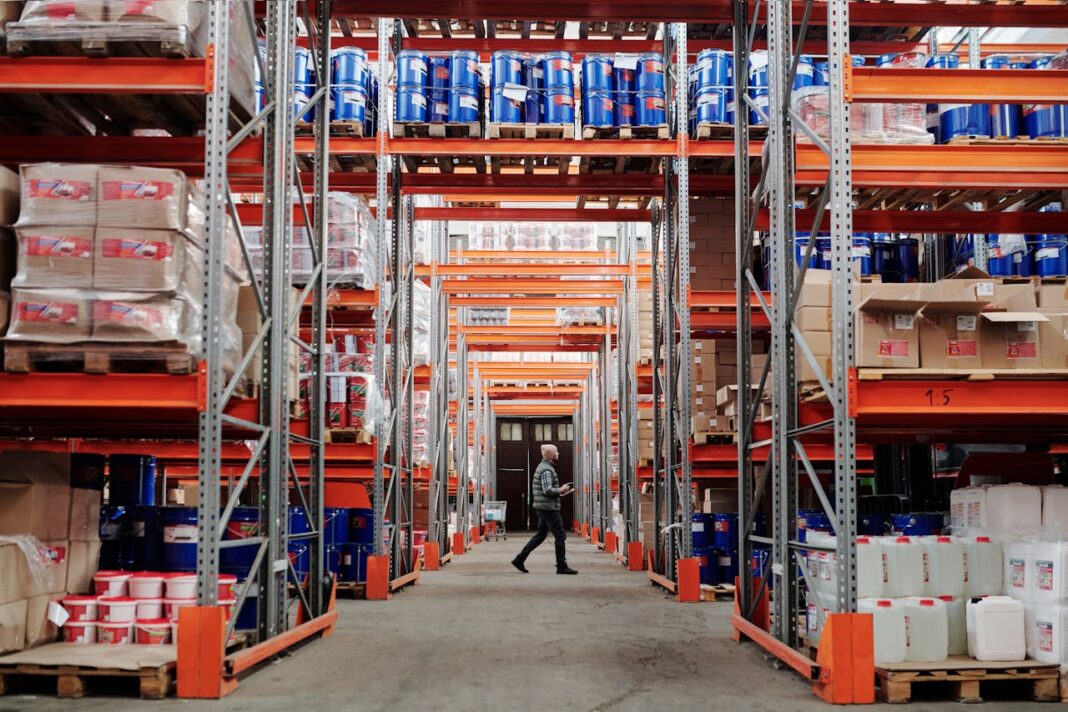The Importance of Proactive Rack Inspections
The sounds of industry and productivity punctuate the rhythm of a warehouse. Rack systems are central to their function, offering an invisible backbone that supports operational efficiency within these distribution hubs. A diligent approach to this proactive measure safeguards against the risks associated with equipment failures and potential collapses.
Adhering to routine inspections circumvents the detrimental effects of neglect, which can manifest as damages or catastrophes within the workplace. By instituting a disciplined inspection regimen, warehouse operations can effectively fortify their risk management strategies, thereby preserving human and material resources. Through such dedicated oversight, warehouses can prolong the lifespan of their racking systems and uphold a high standard of operational safety.
Research, including valuable studies by the Occupational Safety and Health Administration, underscores the importance of regular inspections in minimizing the risk of warehouse injuries and fatalities. Thorough diligence in conducting these inspections aligns with legal and ethical obligations and reinforces the commitment to providing a secure environment for all personnel involved in warehouse operations.
Identifying and Mitigating Rack-Related Risks
In the granular reality of daily warehouse operations, the hazards of racking systems can go unnoticed. These risks encompass a range of issues, such as structural wear and tear, improper weight distribution, and inadequate maintenance procedures. Recognizing these perils requires a dedication to detail and a strategic approach to safety responsive to the dynamic nature of warehousing. Considering their silent but critical role, Rack Inspections Columbus, OH, emerges not merely as a regulatory requirement but as an essential practice for maintaining the safety and well-being of the workforce and equipment.
Warehouses must vigilantly navigate the intricate operational landscape where these hazards reside. By employing practical interventions such as enhancing visibility with robust lighting solutions, creating clear pathways for equipment and individuals, and providing unmistakable signage, facilities can significantly diminish the likelihood of racking-related accidents.
Amid these precautionary measures, warehouses also benefit from adhering to the robust safety standards advanced by organizations like the Material Handling Industry. These guidelines offer comprehensive parameters for maintaining rack integrity, stipulating a holistic framework encompassing material selection, load management, and routine maintenance.
Creating and Upholding a Rigorous Inspection Schedule
Orchestrating a schedule for regular rack inspections is a noteworthy step in embedding a safety culture within warehouse operations. A meticulously crafted inspection calendar is not merely a timeline of tasks but rather a blueprint that secures the welfare of the entire facility. This schedule should synchronize with the operational tempo of the warehouse, ensuring that inspections are conducted systematically and without disrupting the business flow.
Documentation of inspections serves as the historical record of a facility’s commitment to safety. These archives provide invaluable insights into the effectiveness of implemented safety protocols and act as a resource for continual improvement. Accurate record-keeping also proves instrumental in the event of audits, showcasing an organization’s dedication to exceeding safety norms.
Appointing safety stewards—whether designated individuals or teams—ensures a focused inspection approach. This specialized oversight fosters a heightened sense of responsibility and diligence among the appointed parties, thereby ingraining rack safety principles into the warehouse’s operational fabric.
Conducting Rigorous Rack Inspections
A successful track inspection delves into the intricate details of the racking system’s composition and condition. The assessment process should thoroughly review every element, including baseplates, upright columns, beams, and connectors. Particular emphasis is placed on identifying signs of distress, such as dents, rust, or any other indications of deterioration that may compromise the structure’s stability.
The responsibility of adhering to specified load capacities is paramount in ensuring racking safety. Clear delineation and communication of these limits fortify the storage infrastructure against overloading, a common precursor to rack malfunctions. Empowering the warehouse team with knowledge of load limits and safe storage practices is foundational to preventing accidents and preserving the integrity of the racks.
Leveraging the expertise of professionals specially trained in the subtleties of structural examination augments the internal vigilance within warehouses. These inspectors bring a refined perspective to rack safety, identifying potential issues that may escape an untrained eye. Their involvement elevates the level of safety assurance, establishing a necessary buffer against the unforeseen.
Training Employees for Safe Rack Interaction
Education plays a central role in cultivating a safe warehouse environment. Comprehensive training programs that equip staff with the knowledge to interact safely with racking systems can significantly reduce the incidence of rack-related mishaps. Consistent educational initiatives ensure that best practices are deeply ingrained within the workforce, reinforcing the importance of safety as a continual priority.
Regular training sessions and practical workshops refresh safety knowledge among the staff and nurture an environment where proactive reporting of hazards is encouraged. Immersive learning experiences, such as scenario-based drills, allow employees to develop a hands-on understanding of safety measures, practicing the application of these measures in real-world settings.
An educated workforce is the most vital asset in the quest for a safe warehouse. A robust training regimen, coupled with ongoing safety dialogues, perpetuates a culture where safety is recognized as the shared responsibility of all staff members, thereby enhancing the collective commitment to preventing rack-related accidents.
Embracing Technological Advancements for Rack Safety
Technological advancements offer a powerful ally in the quest for enhanced rack safety. With cutting-edge tools such as sensors and monitoring software, warehouse managers can gain real-time insights into the status of racking systems, allowing for rapid response to potential issues. By integrating such technologies, facilities can preemptively address structural vulnerabilities before they escalate into hazards.
Emerging innovations, including using drones for racking inspections, facilitate comprehensive overviews of warehouse layouts, particularly in hard-to-reach areas. These aerial surveys provide a unique vantage point for identifying potential risks and contribute to a more efficient and effective inspection process.
The data from these technologies paves the way for predictive maintenance strategies and safety protocols. As warehouses embrace these modern solutions, they benefit from an elevated standard of safety that is both proactive and preventative, reinforcing their commitment to maintaining a safe working environment.
